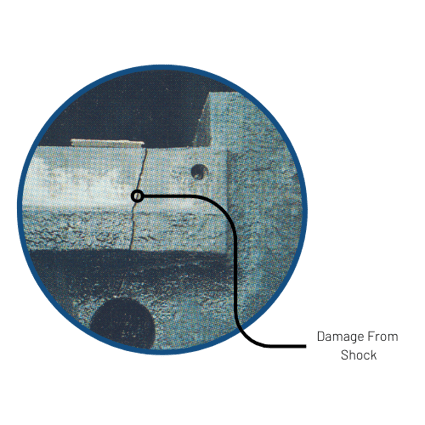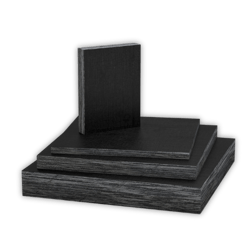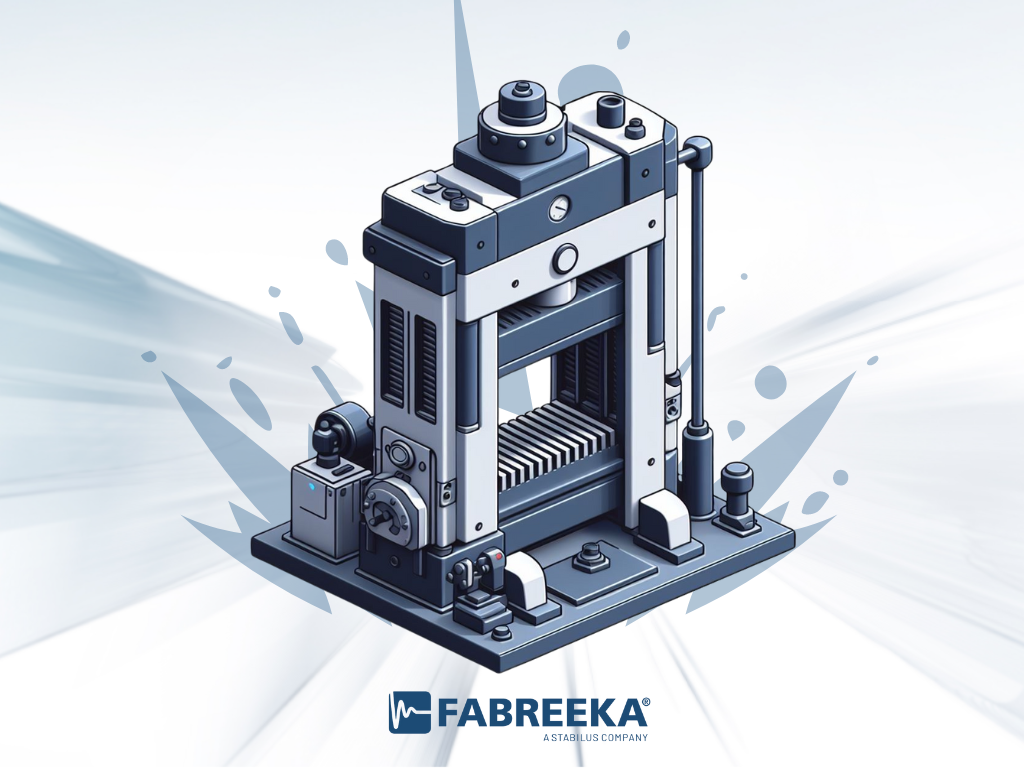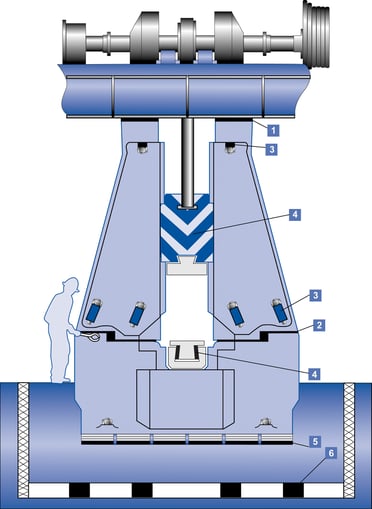Learn more about the Fabreeka Soft System and its exceptional performance in prolonging the lifespan of forging hammers.
Shock and Vibration in Forging Hammers
Forging hammers are heavy industrial equipment used in various applications, including metalworking, blacksmithing, and forging. These machines generate immense force and impact to shape and mold metal into desired forms. However, this force and impact also results in significant shock and vibration within the hammers and its environment.
Shock and vibration in forging hammer![]() s can have detrimental effects on the equipment and the overall forging process. The constant impact and vibrations can lead to fatigue and wear on the hammer components, reducing their lifespan and efficiency.
s can have detrimental effects on the equipment and the overall forging process. The constant impact and vibrations can lead to fatigue and wear on the hammer components, reducing their lifespan and efficiency.
Furthermore, the shock and vibration can also affect the quality of the forged products. Excessive vibration can cause imprecise strikes and inconsistent shaping, resulting in subpar finished products.
Addressing shock and vibration in forging hammers is crucial for maintaining their performance and prolonging their lifespan. This is where the Fabreeka Soft System comes into play.
How Unaddressed Shock Impacts Heavy Equipment
When shock and vibration are left unaddressed in heavy industrial equipment like forging hammers, the consequences can be severe. The constant impact and shock cause stress and fatigue on the hammer components, leading to premature wear and eventual failure.
Unaddressed shock can also result in increased maintenance and repair costs. The frequent breakdowns and component replacements not only disrupt the forging process but also add to operational expenses.
Moreover, the poor performance of forging hammers affected by unaddressed shock can result in decreased productivity and efficiency. The imprecise strikes and inconsistent shaping reduce the quality of the forged products and hinder the overall production output.
To prevent these detrimental effects and maximize the performance of forging hammers, a reliable shock control solution is necessary.
READ NEXT: [Shock-Absorbing Materials for Heavy Machinery]
The Fabreeka® Shock Control System
Utilizing our unique and industry-trusted shock control materials, Fabreeka successfully mitigates the impact of shock and resulting vibration in dozens of forging hammers. Below we'll discuss the material used, as well as the key points throughout the hammer we recommend for installation.
Fabreeka® Pad
Used for more than 100 years for shock and vibration isolation, the Fabreeka pad is best-suited for the type of extreme environments and applications found in the forging industry. Made of tightly-woven cotton duck, Fabreeka pad turns energy into heat, meaning with each strike of the forging hammer, the pad absorbs that energy at high temperatures to provide exceptional shock control.
The pad accommodates high loads with a compressive strength up to 10,000 psi. Moreover, the pad's creep, or how much it compresses with each blow of the hammer, is limited to 5% critical. This means that Fabreeka pad can withstand several blows back-to-back and still maintain its shape, providing superior shock control.
Head Assembly
Now, let's look at where our experts install the pad, developed over dozens of applications and decades worth of experience. In the diagram to the right, Fabreeka pad is installed just under the head assembly (1).
This part of the the hammer houses the power unit, which is typically bolted directly to the machine columns. Shock from each impact then reflects upwards, causing the intense vibration to spread into this sensitive area. By installing Fabreeka pad, you can greatly reduce the amount of transmission.
Column to Anvil Pads
Next, we have the column and anvil pads, located in the lower half of the machine, right around where our worker is standing (2). As this part of the machine can be rearranged depending on the metal work being done, this area of the machine is particularly susceptible to shock.
The heavy blows can knock the columns slightly out of alignment, leading to irregularities in metal forming and downtime for maintenance. Fabreeka pad provides a stable foundation for both the horizontal and vertical elements of this portion of the hammer.
Steel spring Replacements
For many years, Fabreeka pad has been a successful replacement for steel springs that fatigue over time (3). Located at both the top and midsections of the forging hammer, the Fabreeka pad is cut into washers and bushings to reduce the transmission of shock at these key points.
Anvil Cap or Sow Block
Whether for routine maintenance or different metal forming projects, the sow block (4) can be difficult to remove. The Fabreeka pad creates a tight fit, providing the same great shock control benefits. The installation thus reduces stress resulting from heat expansion in the sow block.
Foundation Block Isolation
For even greater efficiency and shock reduction, the isolation of the foundation block using Fabreeka's various foundation isolation materials come together for a whole-system approach. Supporting the block on an isolated foundation block protects the surrounding environment, mitigates noise, and keeps working environments safe.
Anvil Mat
For further isolation, the Fabreeka Soft System (pictured below) is a uniquely designed shock control solution that protects the anvil and reduces the load on the foundation. Bonded to steel plates, the soft system increases stability and load distribution. The soft system can be changed to suit a variety of forging hammers and soil conditions, no matter where the machine is.
Maintaining and Maximizing the Efficiency of Forging Hammers
To maintain and maximize the efficiency of forging hammers, regular maintenance and inspection are essential. This includes monitoring the condition of the Fabreeka Soft System and ensuring its proper functioning.
Inspecting the Fabreeka Pad for signs of wear or damage and replacing it when necessary is crucial for optimal shock control. Additionally, checking the mounting and alignment of the Fabreeka Pad within the forging hammer is important to ensure its effectiveness.
By prioritizing the maintenance of the Fabreeka Soft System and addressing any issues promptly, forging hammer operators can continue to unleash the full power of their equipment and achieve consistent, high-quality results in their forging processes.
For more reading on Fabreeka in the forging industry, discover how we're forging stronger foundations with our industry-specified shock control.




SUBMIT YOUR COMMENT